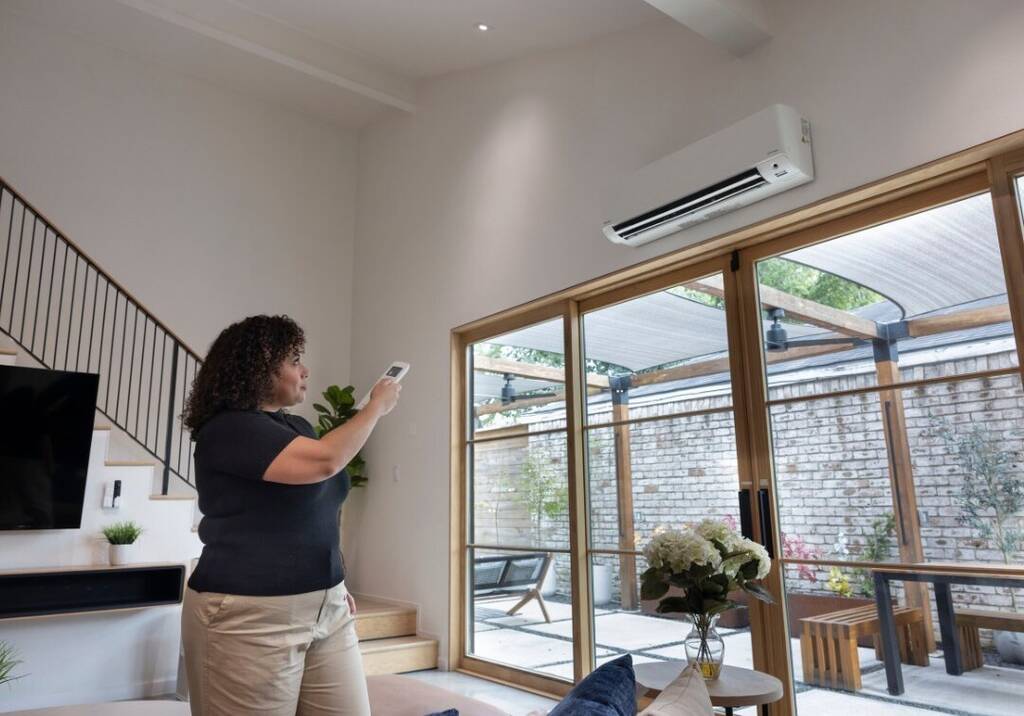Key Takeways
- Hot indoor temperatures and high energy bills are often caused by outdated cooling systems, poor insulation, sun exposure, and airflow issues.
- Upgrading to a modern, energy-efficient cooling system can improve comfort, lower electricity costs, and provide more consistent cooling.
- Simple adjustments like using ceiling fans, blocking sunlight, sealing air leaks, and maintaining your system can help improve indoor temperatures.
- Combining smart cooling solutions and efficient home upgrades can create a more comfortable living space without excessive energy costs.
Does your home feel like an oven in the summer, no matter how much you run the AC? Are your energy bills climbing higher each month? If so, you’re not alone. Many homeowners struggle with keeping their homes cool without draining their wallets.
The good news? You don’t have to settle for discomfort or skyrocketing costs. There are practical solutions that can make a big difference in how your home feels—without requiring a complete overhaul. From understanding why your space stays so warm to exploring more innovative cooling options, small changes can lead to significant improvement.
Let’s break down what might be causing the heat and how you can fix it.
Why Your Home Feels Unbearably Hot
There’s nothing worse than cranking up the AC only to realize your home still feels warm. If this sounds like your daily struggle, several factors could be to blame:
- An Outdated or Inefficient Cooling System – Older AC units struggle to keep up with rising temperatures. They work harder, run longer, and consume more energy—all while failing to keep your home cool.
- Poor Insulation – If your home isn’t well-insulated, cool air escapes while hot air sneaks in. This forces your AC to work overtime, leading to uneven house temperatures.
- Sun Exposure – Large windows, especially those facing west or south, can turn your home into a greenhouse. The sun’s heat pours in without proper shading, making rooms feel warmer than they should.
- Blocked Airflow – Sometimes, the problem isn’t with your cooling system but with airflow itself. Dirty air filters, blocked vents, or closed doors can prevent cool air from circulating correctly.
- High Humidity Levels – Excess humidity can make the air feel thick and sticky even if your AC runs. Without proper dehumidification, your home may never feel as cool as you want.
Identifying the root cause of your cooling problems is the first step. Now, let’s talk about a solution that can make a real impact.
A Smarter Way to Stay Cool
If you’ve been dealing with constant discomfort and sky-high energy costs, it may be time to consider a new air conditioner. Modern cooling systems are designed to be far more efficient, using less energy while providing better performance. Here’s why upgrading could be the game-changer you need:
- Better Energy Efficiency – Newer models have higher SEER (Seasonal Energy Efficiency Ratio) ratings, meaning they use less electricity to cool your home effectively. That translates to lower monthly bills.
- Smart Features – Many of today’s air conditioners work with smart thermostats, allowing you to control temperatures remotely and optimize cooling schedules for maximum efficiency.
- More Consistent Cooling – A properly sized AC for your home ensures even cooling without hot and cold spots. Older or improperly installed units often struggle to maintain a balanced temperature.
- Quieter Operation – If your current unit is loud and disruptive, you’ll be happy to know that modern systems operate much more quietly while delivering powerful cooling.
Upgrading your cooling system isn’t just about staying comfortable—it’s about long-term savings and efficiency. But if you’re not ready for a complete replacement, other ways exist to improve your home’s cooling performance.
Other Cooling Solutions to Consider
Are you not ready to invest in a brand-new cooling system just yet? No problem. There are plenty of other ways to make your home more comfortable without a significant upgrade. Small changes can have a surprisingly big impact on temperature control and energy efficiency.
- Use Ceiling Fans Wisely – Fans don’t lower the temperature but help circulate cool air more effectively. Running a ceiling fan with your AC can make a room feel several degrees cooler, allowing you to set your thermostat slightly higher and save energy.
- Block Out the Heat – Streaming sunlight through your windows can raise indoor temperatures quickly. Blackout curtains, reflective window films, or even simple blinds can significantly reduce heat buildup, keeping your home cooler without overworking your AC.
- Seal Air Leaks – Gaps around windows and doors let cool air escape and hot air creep in. Sealing these leaks with weather stripping or caulk can make a big difference in maintaining a consistent temperature.
- Keep Up with Maintenance – A clogged air filter can make your AC work harder than necessary. Changing filters regularly and scheduling routine maintenance helps your system run efficiently and last longer.
- Consider a Dehumidifier – High humidity makes warm air feel even hotter. A dehumidifier can help remove excess moisture from the air, improving overall comfort and reducing the strain on your AC.
These strategies can help create a cooler indoor environment without running your air conditioner nonstop. And when combined with an efficient cooling system, they can lead to even more significant savings and comfort.
Conclusion
You’re not alone if you’ve been battling uncomfortable indoor temperatures and high energy bills. The good news? You don’t have to just put up with it. Whether it’s improving insulation, adding better shading, or upgrading to a more efficient cooling system, there are plenty of ways to take control of your home’s comfort.
A few smart changes can go a long way in keeping your space cool while keeping costs down. So, if you’re tired of sweating through the summer and dreading your next electricity bill, now might be the perfect time to explore your options. After all, staying comfortable shouldn’t have to cost a fortune.

